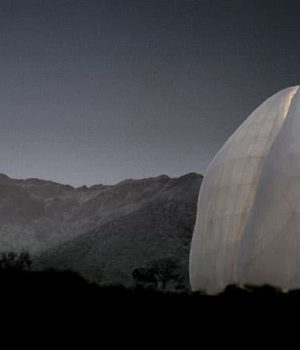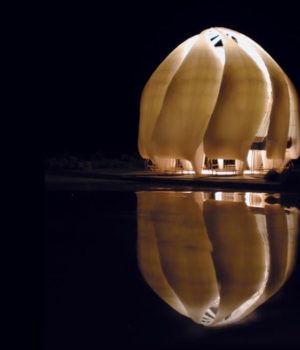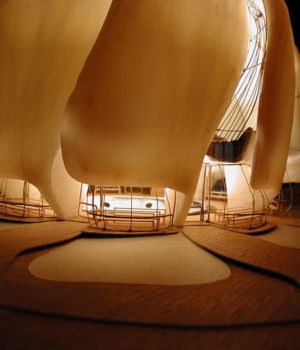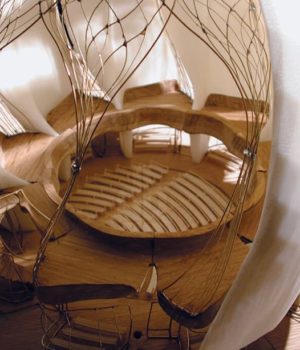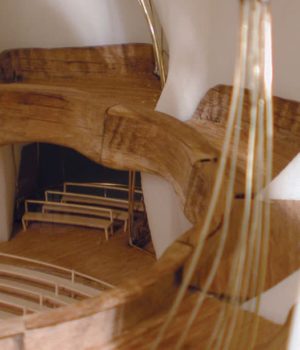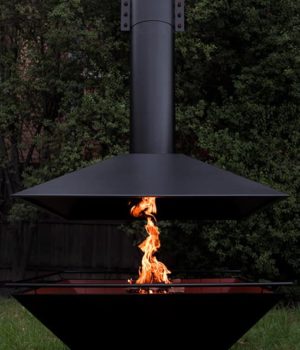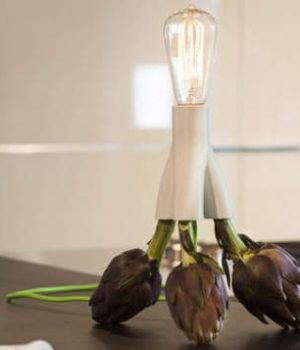The Bahai Temple of South America by Toronto firm Hariri Pontarini architects, employs both translucent stone and the newest glass technology as the means of generating and manifesting both the physiological and spiritual delights of natural light embodied in architecture. born out of an international competition with over 180 entries from 80 countries, the bahá’í temple of south america is a nine-sided structure with nine entrances that symbolically welcome all people from all directions of the earth to join in prayer and meditation. Its form and materiality break new ground, drawing on the power of light as inspiration. nine gracefully torqued wings of cast glass and translucent stone billow like sails, projecting a sublime, ethereal luminescence. Visually light, the building is structurally strong. situated in a seismic zone, the structure’s innovative engineering accommodates ground movement while flexing under lateral loads. Each wing is formed much like a leaf, whose veins stem from a primary steel structure with secondary branches, thinly veiled, supporting an external and internal skin. This steel superstructure, graciously following the curved form, rests on a concrete substructure, which then bears on seismic isolation pads, separating them from the foundation. There are approximately 850 individual structural steel members per wing, each a different length, and each requiring a unique nodal connection. The exterior cladding consists of cast glass panels, researched and developed specifically for the project, while the interior is clad with translucent marble. Set against the stirring background of the andean mountain range, the new temple is designed to be a crystallizing of light-as-expression, an evanescent structure of translucent marble and glass: a place of pure luminescence.
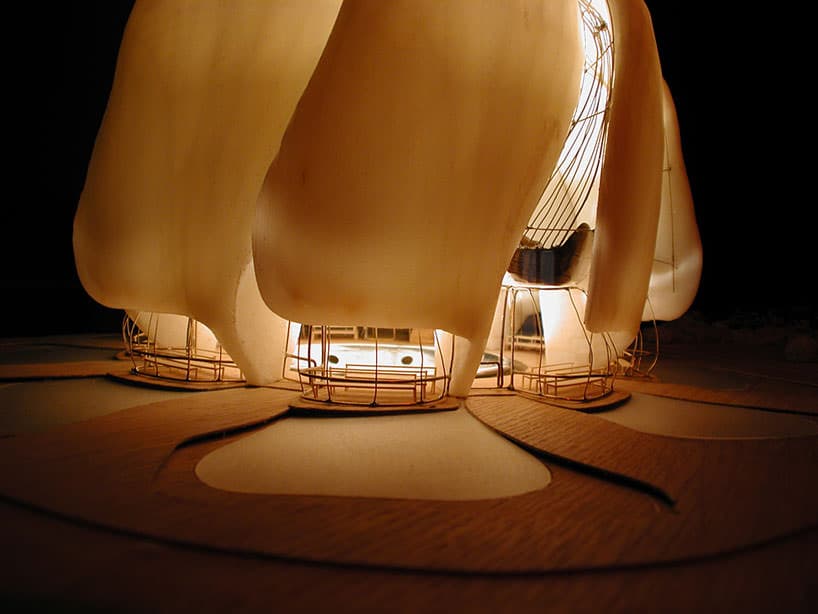
“Bahai Temple of South America” in Santiago, Chile
